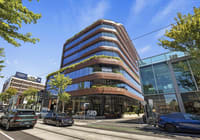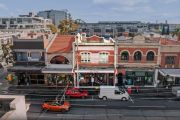
Retail property: makeup mavens meet selfie snappers in shopfront surge
Andrea Felsted and Shelly Banjo
Millennials’ love of digital media, and desire to look their best in their selfies, is fuelling a beauty boom in the US and Europe. Ironically, this is driving demand for physical stores where makeup junkies can get their fix.
But those companies seeking to benefit from this trend should take care. Beauty may be in the eye of the beholder, but there’s nothing attractive about over-expansion followed by expensive retrenchment.
More health and beauty shops opened in 2016 than any other type of retailer in Europe, according to property consultants CBRE. The most active included specialist brands such as Kiko Milano, Rituals and Aesop, as well as L’Oreal’s NYX, a range of professional cosmetics at affordable prices, and its edgy Urban Decay line.
It’s a similar picture in the US. Ulta Beauty Inc. said it would open 100 new stores across the country, while Sephora, already the nation’s No.1 seller of perfumes and cosmetics, is also continuing to expand.
The big cosmetics names are muscling in around the world, selling direct to consumers through their own stores. L’Oreal doesn’t disclose the total size of its store base, although it did say recently that it opened close to 200 shops across its cosmetic lines (excluding the Body Shop). It’s a similar picture at Estee Lauder, which is also building out its physical presence.
The push for new shopfronts makes sense, given gains in the makeup market. For every dollar US shoppers spent at department stores, they shelled out $2.30 at health and beauty locations.
The trend is not just confined to the US. Around the world, women are choosing to spend more of their money on cosmetics.
But there’s another factor driving the expansion: supply.
In the US, many department stores and clothing retailers are shrinking their store bases. In Asia, as some luxury brands shutter shops, there are opportunities for beauty companies to move in. And in Europe, while some clothing lines are still expanding, they’re being selective about new locations.
Its easy to see why mall owners want to attract more makeup stores: they operate in one of the few growth areas of the market, and crucially, they are still prepared to expand through the addition of new outlets. They also tend to have fatter margins, so are more able to pay premium rents.
But cosmetics sellers should proceed with caution.
The history of retail is littered with tales of over-expansion. The Body Shop, owned by L’Oreal, has about 3000 stores. It is now selling the chain, and any purchaser is likely to cull locations.
There’s also a risk of oversupply if fashion retailers pile in. Hennes & Mauritz AB and Associated British Foods Plc’s Primark have introduced beauty ranges.
Finally, operating physical stores involves extra costs, from staff to property taxes, and unless carefully managed can put pressure on margins.
Bloomberg











